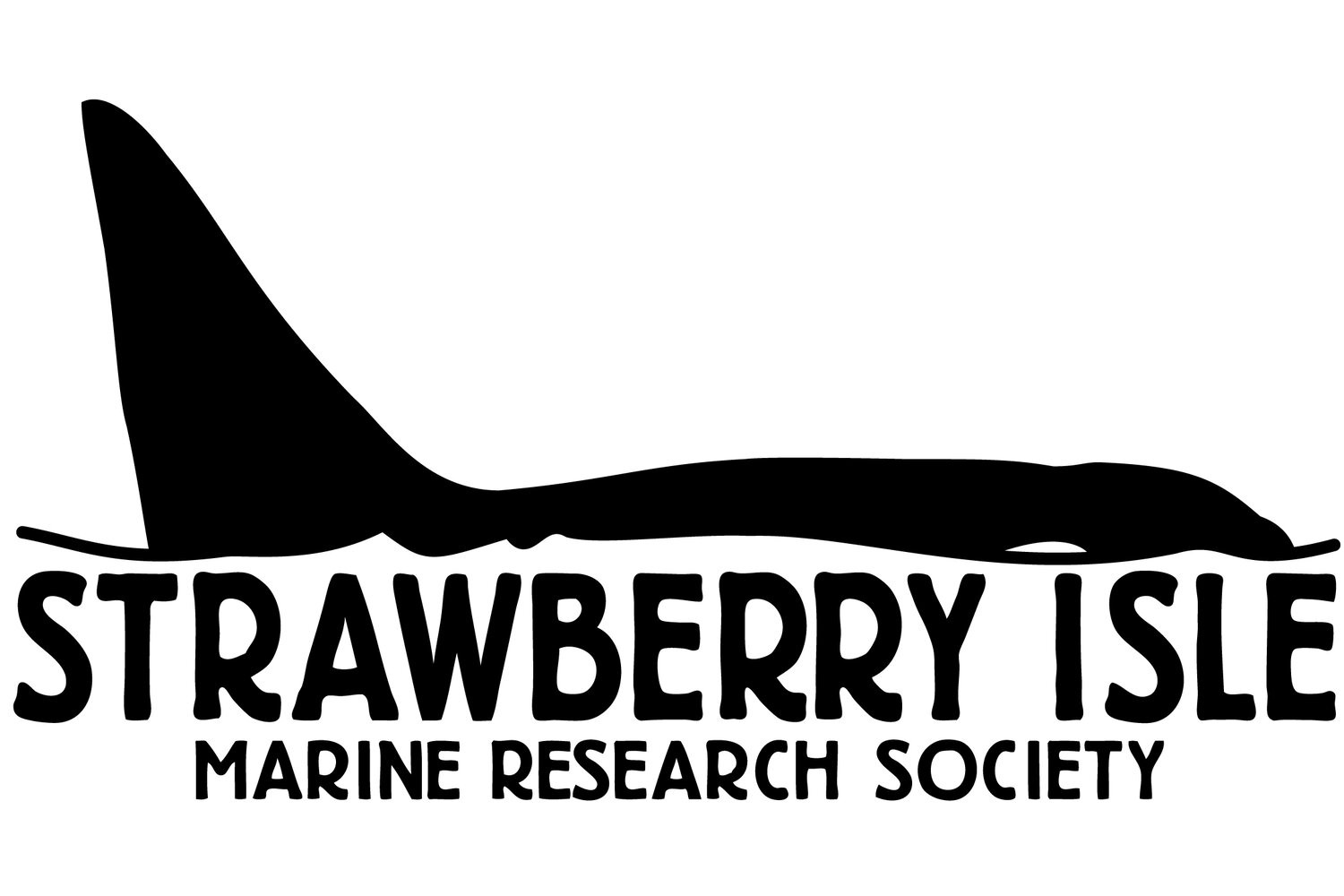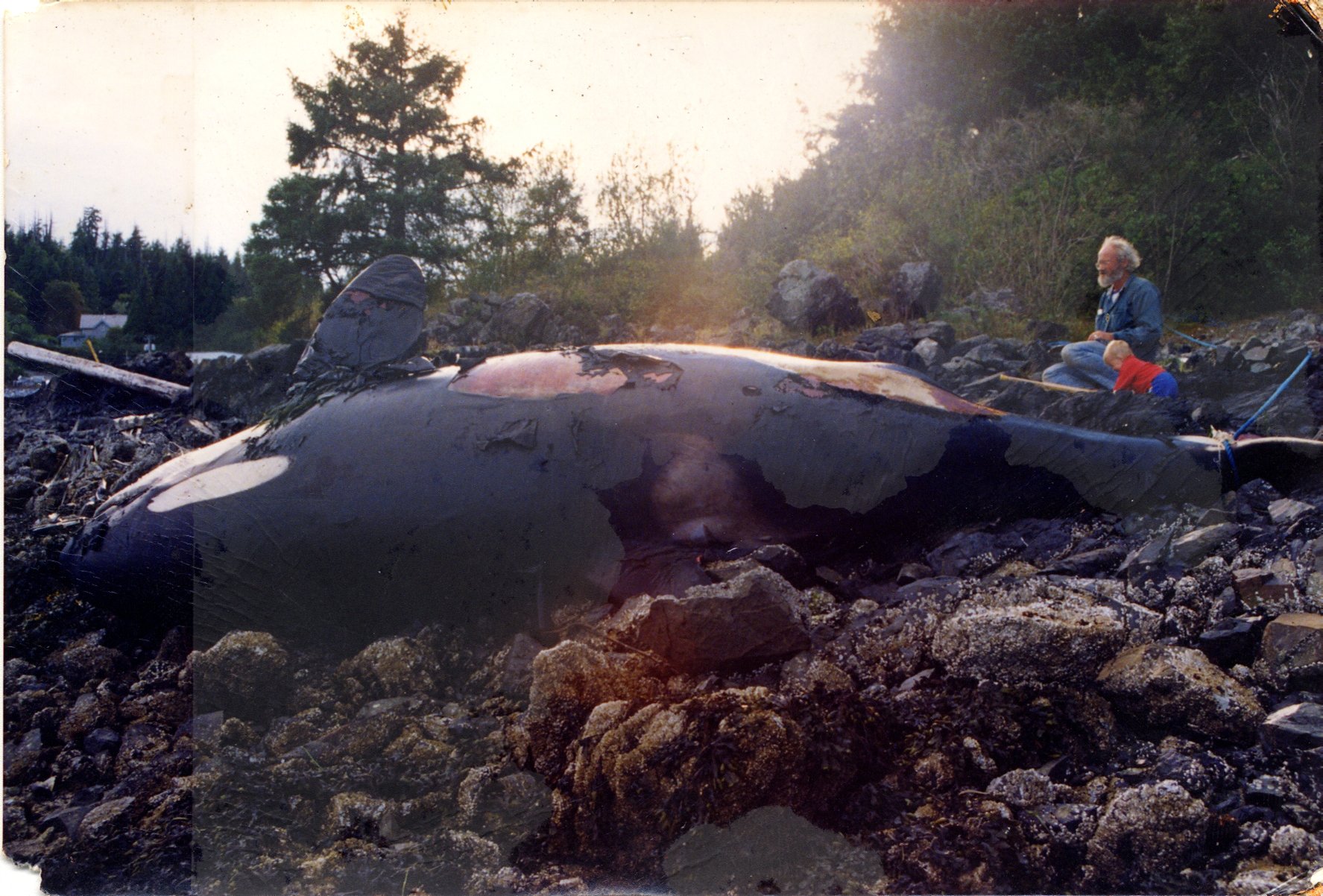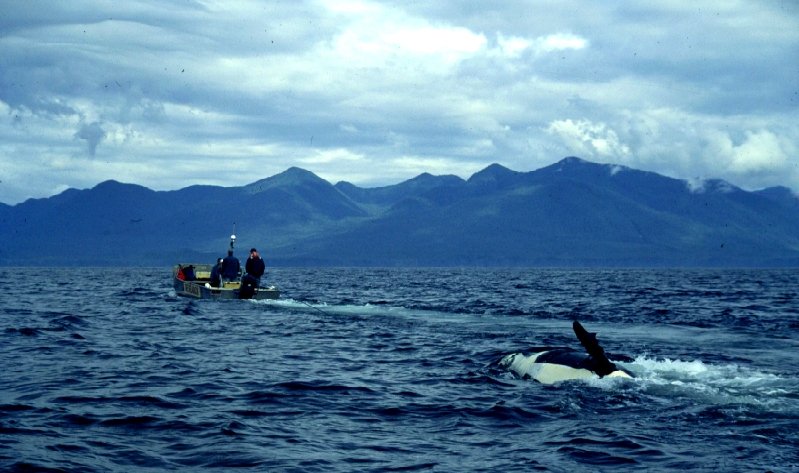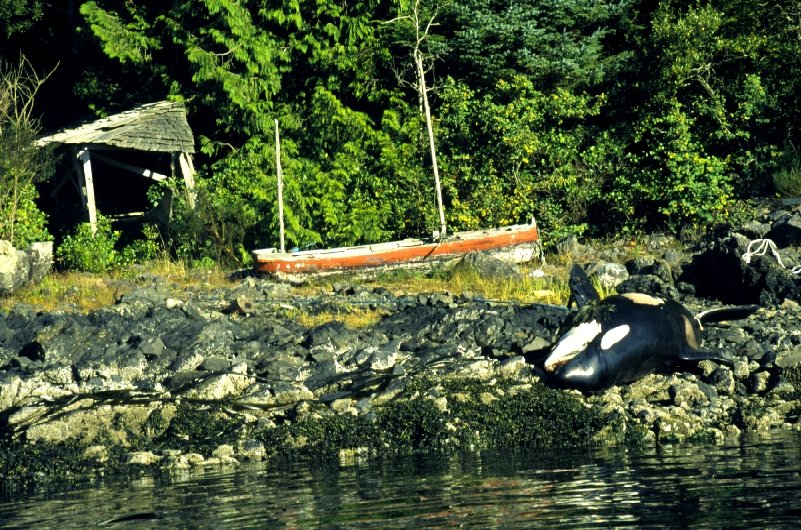Reconstructing a Killer Whale Skeleton
/Did you know that Tofino is home to one of the rarest whale skeletons in the world? That's right, Strawberry Isle Marine Research Society has a complete offshore killer whale skeleton! Her name is O120 and to date, she is the only traveling killer whale skeleton in the country, and the only offshore killer whale skeleton used for education.
The day was August 29th, 1997, and a dead killer whale was reported drifting 17 miles offshore of Tofino. Determined to retrieve the whale's body, SIMRS founder Rod Palm set out in his research vessel. After 11 hours, and with many fuel and food deliveries from supporting whale-watching vessels, Rod had towed the whale behind his vessel all the way back to the shores of his home on Strawberry Island!
A full necropsy was presided over by Dr. Craig Stephen, a vet at Vancouver Island University, with Graeme Ellis (Nanaimo Biological Station), Dr. Jane Watson (Vancouver Island University) and Rod Palm in attendance. A DNA analysis done by Dr. Lance Barrett-Lennard (Vancouver Aquarium) confirmed that the animal was a member of the offshore population of killer whales. Graeme Ellis later identified the saddle patch and dorsal fin of this 5.5m (18ft) orca to be an offshore female known as O120. No clear cause of death was found, though her heavily worn teeth and thin blubber suggest that she may have been old and far removed from her home in more southern waters. O120 also had a massive cavity and abscess extending into her jaw bone which may also have been a contributing factor for her death.
After many days of chopping, hacking, sweating and swearing, Rod and his team had the bones either buried in the garden, hanging in the sea or boiling in a pot. Once left to bleach in the sun for an entire year, the bones were ready to be treated. Dominique Dupuis (Pipot) organized a crew of volunteers who put in close to 700 hours scrubbing the bones and treating them with several coats of a non-toxic penetrating epoxy. Pipot and Robinson Cook created the ingenious orca-sized custom framework that supports the skeleton, and shows the animals internal organs. Build-A-Whale was complete and all that hard work paid off!
So what happens when you find a dead killer whale skeleton? You use it for education of course! Now O120 travels around BC visiting communities near and far as part of our Build-A-Whale Program. Participants can help in reconstructing her skeleton while learning about the biology, ecology, anatomy, evolution and conservation of killer whales and other marine mammals in our waters in BC. This mobile program has visited many facilities across British Columbia including, schools markets, festivals, aquariums, care homes and more. O120 has traveled as far north as Prince Rupert and as far east as Ontario. She has become an ambassador for her species, educating and inspiring us all about marine conservation and the plight of whales in BC waters.
You can come and meet this rare offshore orca and participate in a Build-A-Whale Program, by donation, in Tofino and Ucluelet this summer! O120 will be in Tofino at the Tofino Visitor Center this August 18th and September 15th, from 10am-12pm, and in Ucluelet at the Amphitrite Lighthouse, on the Wild Pacific Trail, this August 3rd, 10th, 17th, 24th and 31st, from 10am-12pm. Bone by bone, help piece together O120s skeleton and get some hands-on interaction with these mysterious and rarely seen animals. We hope to see you there!
Original Pictures from collection in 1997.Written by, Sophie Vanderbanck. Sophie is the Program Coordinator and Operations Assistant for Strawberry Isle Marine Research Society.






